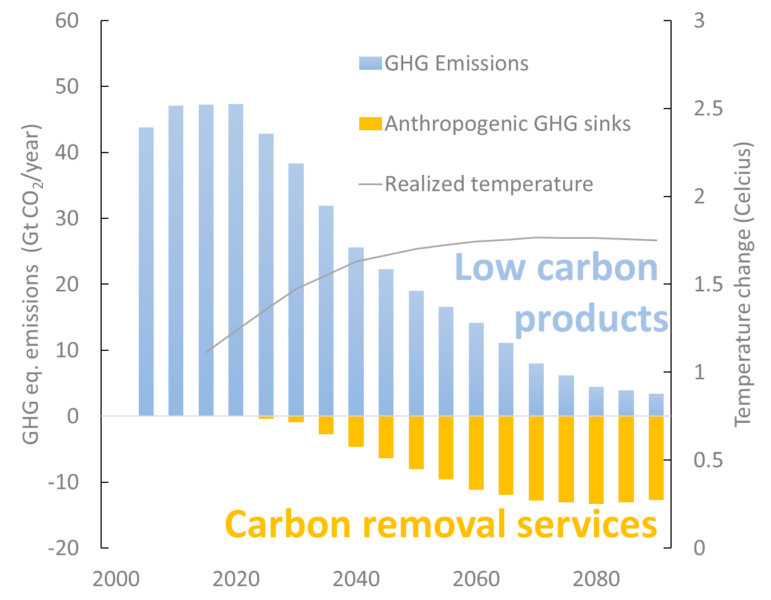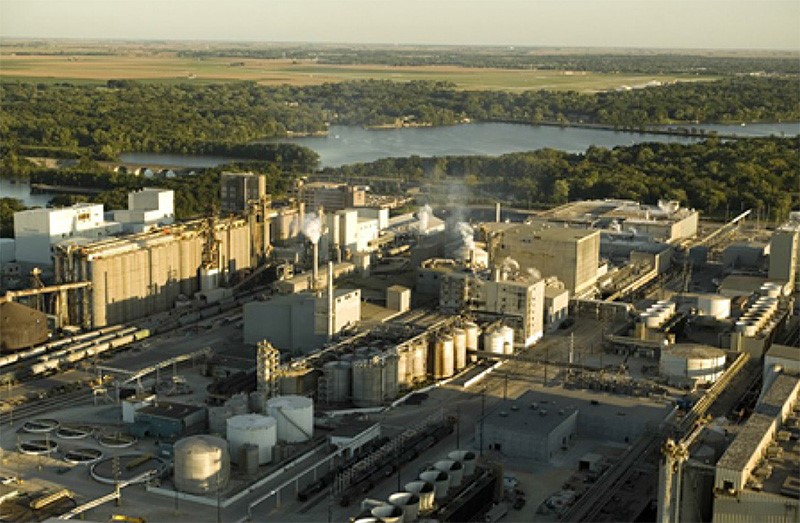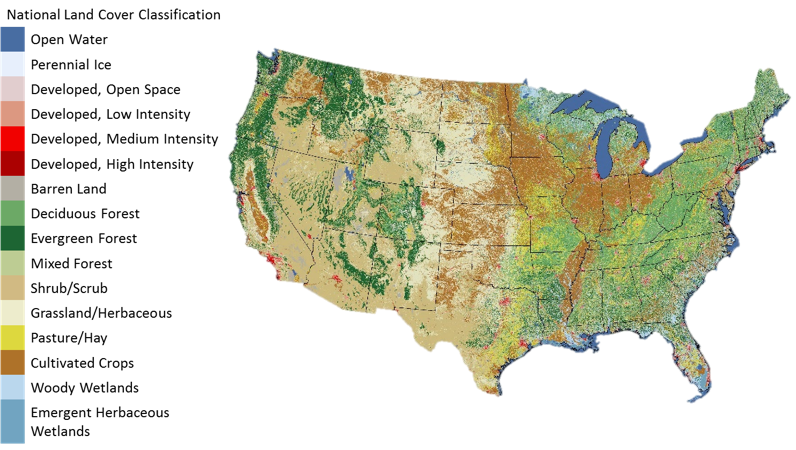Reaching the climate targets set in Paris will require dramatic action from all sectors of the economy over a period of several decades. While energy and transportation are the largest sources of U.S. emissions, the future climate also depends in great measure on the biological carbon cycle. Carbon dioxide is absorbed from the atmosphere by photosynthesis and stored for months, decades, or even millennia in plants, trees and soils, and later returned to the atmosphere when the plants die and break down and carbon stored in soils is oxidized. This cycle keeps a great deal of carbon out of the atmosphere, which is described as a carbon sink. Biofuels, bioenergy and other biobased products sit at the intersection of energy and transportation fuel emissions and the biological carbon cycle, so we must consider both to understand their role in a world free of carbon pollution.
To slow and ultimately stabilize global temperatures, climate science finds that we will need to bring net emissions of heat trapping gasses to zero, with ongoing emissions balanced by increased sequestration of carbon in forests, soils or geological storage. Last year in Paris, the nations of the world committed themselves to achieving this net zero target in the second half of the century. This post is based on a talk I gave last month at a conference on the Bioeconomy at Rutgers University. I explore the role of the bioeconomy within a net zero world, especially the competition between using bioproducts to produce low carbon goods, and using land for carbon sequestration services. My conclusion is that with smart land use strategies, the bioeconomy need not be a zero-sum game.
Getting to net zero requires low carbon products and carbon removal services
Advocates of what I will call the bioeconomy (shorthand for biofuels, bioenergy and bioproducts) argue that in a low carbon world we will need a lot of low carbon replacements for products currently made from fossil fuels. One key rational for biofuels and bioenergy has been their potential to have lower lifecycle emissions than fossil fuel products they replace or complement. But achieving a net zero economy requires a higher level of ambition. All aspects of the economy must not simply reduce emissions compared to a status quo scenario, but bring net emissions to zero in the second half of the century. Bringing net emission to zero will require steadily scaling up carbon sinks, both to offset economic sectors in which it is not feasible to bring emissions to zero, and to achieve net negative emissions profiles consistent with climate stabilization in the second half the century. These goals are illustrated in the chart below, with falling blue bars reflecting the need to dramatically cut emissions while the growing yellow bars show the importance of increasing carbon sinks.

Today’s bioeconomy is mostly about low carbon products
Today the primary way the bioeconomy supports the transition to a net zero economy is by providing less carbon intensive biobased fuels and products to substitute for carbon intensive fossil fuels and products. This helps to bring down the height of the blue bars. But the production of bio-based products also competes for land that could otherwise be used to expand the biogenic carbon sink, most notably by protecting, enhancing or expanding forests that can sequester carbon. This means the bioeconomy can also influence the yellow bars.
The tradeoffs between producing biofuels and protecting forests has been the subject of considerable analysis and debate in the context of estimating land use change emissions from biofuels (see this earlier post for more details). But there is another way to look at the same basic tradeoff in the context of the path to net zero emissions. The ability of the land sector to act as a carbon sink can be considered a carbon removal service provided by the bioeconomy. Carbon removal services can be produced as a primary land use strategy, for example by expanding the amount of forest land. But carbon removal services can also be produced in conjunction with production of other biofuels or bioproducts and as the economy moves towards net zero, the role of these carbon removal services will grow.
Net zero means moving beyond combustion
Two essential elements deep decarbonization strategies have in common are a steadily larger share of energy supplied from non-combustion sources such as wind or solar energy, and a steady shift in end uses of energy away from combustion based technology towards electrification. For transportation, this means battery electric and fuel cell vehicles powered with wind, solar and other low carbon sources of electricity and hydrogen. The transition beyond combustion will take time, and will occur more quickly in some sectors than others. For example, battery electric passenger cars are available today, while long haul trucking is more challenging for electrification, and aviation even more so.
As the shift beyond combustion occurs, the bioeconomy must adapt. One strategy would be to transition from its current focus on producing low carbon biofuels to a focus on producing carbon removal services. As demand for gasoline falls, demand for ethanol to blend into it will as well. But biofuel facilities are also well positioned to get into the carbon removal business. In fact one of the first carbon sequestration projects is at an ethanol facility in Decatur Illinois, which is capturing CO2 emitted during the ethanol fermentation process and sequestering it in a saline reservoir in the nearby sandstone.

Archer Daniels Midland’s Agricultural Processing and Biofuels Plant, Decatur, IL. Photo DOE.
Fermentation, and many other important biological and chemical processes produce CO2 as a byproduct of their processes. Because CO2 released from some of these processes is nearly pure, it is much more efficient to capture it from these sources than from exhaust gasses of combustion (in which CO2 is just 10-15%) or from the air (in which CO2 is just 0.04%). Capturing and sequestering CO2 from the bioeconomy can complement existing low carbon fuel production in the near term, and over time the value of the carbon removal may eventually exceed that of the biofuel or bioproduct. A recent study of how the Western United States could achieve a net negative emissions electricity system by 2050 using biomass energy coupled with geologic carbon sequestration found that, in most scenarios, the value of carbon removal exceeded the value of energy generation. So, as demand for gasoline other liquid transportation fuels fall, the biofuels industry may evolve into sequestering carbon and producing recyclable bio-plastics in place of combustion fuels.
The bioeconomy has a big land footprint, and they aren’t making any more land
For the most part, the bioeconomy relies on arable land. The land base of the United States is essentially fixed, so if we use more land for the bioeconomy, we use less for something else. The lower 48 states are about 1.9 billion acres, of which about 600 million acres are forests, 600 million acres are grassland/pasture, and about 400 million acres are cropland.

U.S. Geological Survey. National Land Cover Database, 2011
Biofuels are already a major part of the crop mix
Already a significant share of U.S. cropland is producing bioenergy. Almost half of U.S. cropland is planted in just two crops, corn (94 million acres) and soybeans (84 million acres). A large share of these crops are already used as transportation fuel (about 40% of corn is used for ethanol and 25% of soybean oil is used for biodiesel), and given competing demand for food and animal feed, substantial growth will have to come from other sources.

Production of first-generation biofuels is integrated with production of animal feed, as biofuels use consumes about 70% of the mass of the corn and 20% of the soybeans, with the remainder used for animal feed. Further integration of biofuels production into existing agricultural production is possible, for example by producing cellulosic biofuels from crop residues like corn stalks that would otherwise be rapidly oxidized. Using crop residues for fuel allows for expanded biofuel production without expanding the footprint of agriculture. However, harvesting crop residues must be very selective, because residues also play an important role protecting soil from erosion and maintaining soil carbon. Excessive harvest of residues from the field may reduce soil carbon, or miss the opportunity to increase it. The use of residues must be carefully monitored, to understand the tradeoffs. adopting limited harvest of residues together with practices such as cover crops, these tradeoffs can be mitigated.
Integrating perennial energy crops into the agricultural landscape provides another important opportunity for synergy between producing biofuels and providing carbon removal and other environmental services. However, using large areas of land for perennial crops is not without tradeoffs. For example, much of the U.S. land area identified as suitable for energy crop production in the Department of Energy’s the recently updated billion-ton study overlaps with the land identified for potential reforestation by the World Resources Institute.

Expanding either perennial energy crops or regrowing forests on land largely in pasture today can provide climate benefits with a relatively modest impact on food markets and other competing land uses. But more of one land use obviously comes at the expense of less of the other, and they bring a different balance of low carbon goods versus carbon removal services.
Within forest management, there are similar tradeoffs. Forests managed to provide maximum biomass for biofuels or bioenergy may come with shorter rotations and thus come at the expense of maximizing carbon stored in the forest. Different combinations of products will provide different mix of carbon removal and other environmental services, for example forests managed with longer rotations will produce more timber and also store more carbon.
Smart land use opportunities at a subfield scale
Another emerging opportunity for synergy comes from recent efforts to apply the tools of precision agriculture to conservation goals. Using fine grained data to evaluate yields, profits, and other outcomes at a sub-field scale, researchers find there is an opportunity to place perennial cover on small areas of farms that are marginally profitable for corn. A related field of research demonstrates that strategic placement of perennials in row crop systems can provide disproportionate benefits, for examples placement of prairie strips on 10-20% of a field can reduce rates of water pollution and erosion by 80-90%. Taken together these lines of inquiry suggests that with skillful placement, the integration of high yielding perennial energy crops like miscanthus into a landscape currently dominated by row crops can provide not only a feedstock for low carbon biofuel production, but can reduce pollution from row-crop agriculture while the crops sequester significant carbon in deep root systems. Meeting biofuel feedstock demand with perennial crops can significantly reduce water pollution, thereby reducing the hypoxic zone in the Gulf of Mexico.
Scaling up perennials for multiple benefits
Initially, when only a small share of land is in perennial cover, the logistics of harvest and collection will not likely support large scale biorefinery feedstock requirements, so these strategies will at first be motivated primarily for the environmental services they provide, especially reduced water pollution. But as biomass feedstock supply chains evolve and grow, perennial feedstocks can play a larger role in the bioeconomy. The visual sequence below was created by researchers at Iowa State University. It provides a visual representation of how Iowa’s landscape could evolve, from its present state dominated by row crops, to increasingly large share of perennial land cover. The commentary I added highlights implications for the bioeconomy as we move towards net zero.
Policies must support low carbon products and carbon removal services
With appropriate policy support for carbon sequestration and reduced water pollution, strategies that are good for the climate can also improve profitability for farmers. Given that approximately 40% of U.S. corn grain and 25% of soybean oil are currently being used to produce biofuels, there is a substantial opportunity to complement the production of low carbon products with carbon removal and other environmental services within the footprint of land currently used for biofuel production.
The current policy landscape provides support through a variety of mechanisms for climate benefits associated with biofuels. But in most cases, the same level of support is not currently available for land based carbon removal services that compete with or complement biofuel production, such as reforestation or agricultural practices to increase soil carbon. This asymmetry in policy support is unlikely to produce an optimal outcome.
The land sector has a lot to offer in a net zero world, but it can’t do everything. We need smart policies that deliver multiple benefits and we need to be realistic about how large a bioeconomy we have room for in a crowded landscape. Different types of land will be suitable for different combinations of row crop production, utilization of agricultural residues for bioenergy, implementation of cover crops or conversion of specific areas to perennial cover or forest. Moreover, the preferences of a landowner or manager will depend a great deal on policy support, market access, and availability of knowledge and technology to support different approaches. Analysts need to provide data, insight and tools to guide these choices, while policymakers should provide a policy landscape that supports an appropriate mix of products and carbon removal services required to meet net zero challenge and stabilize the climate for future generations.
